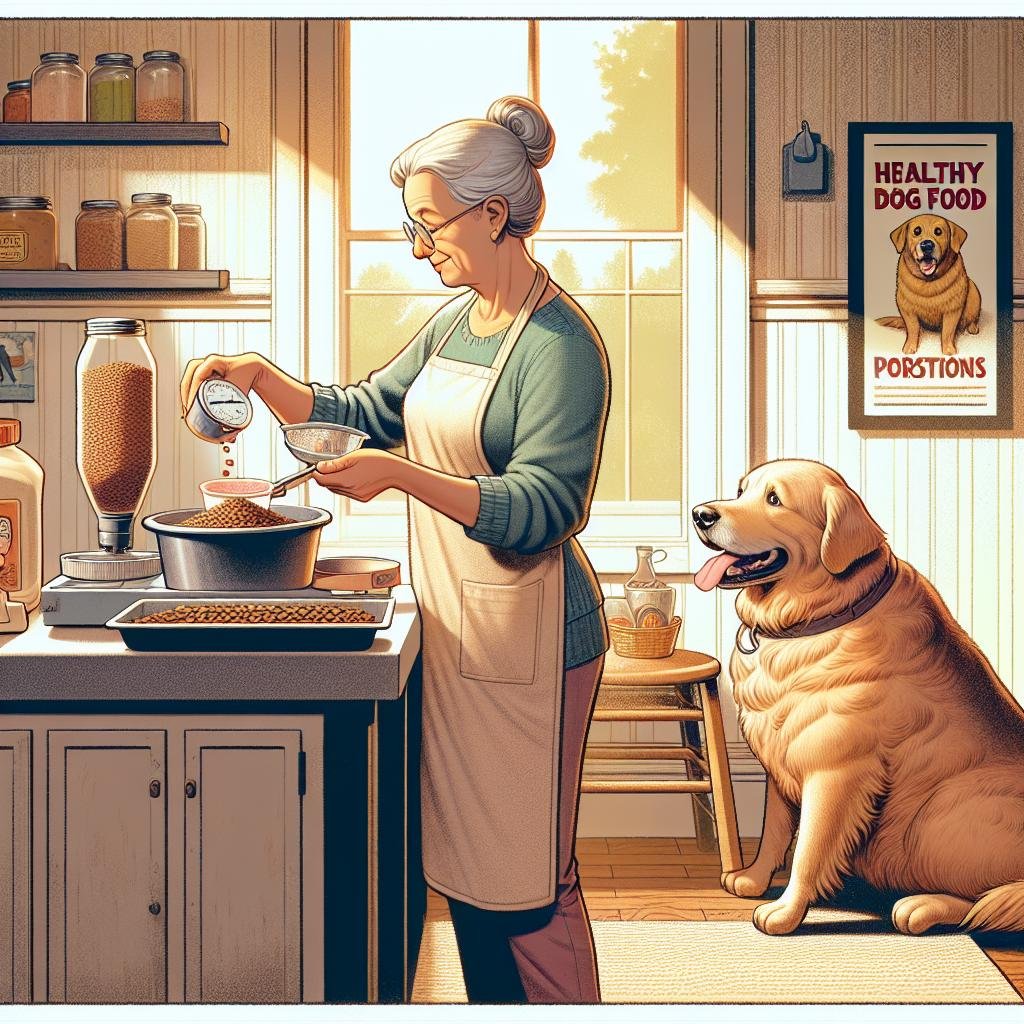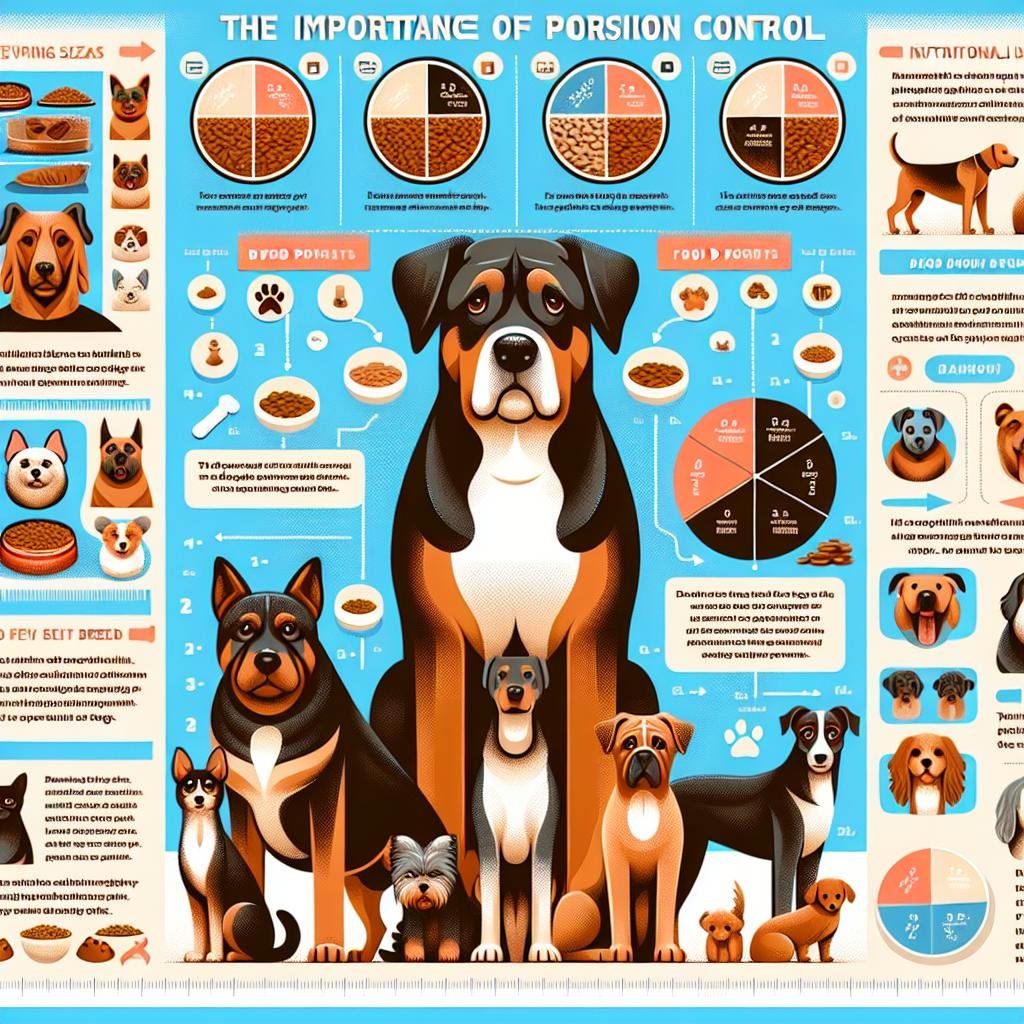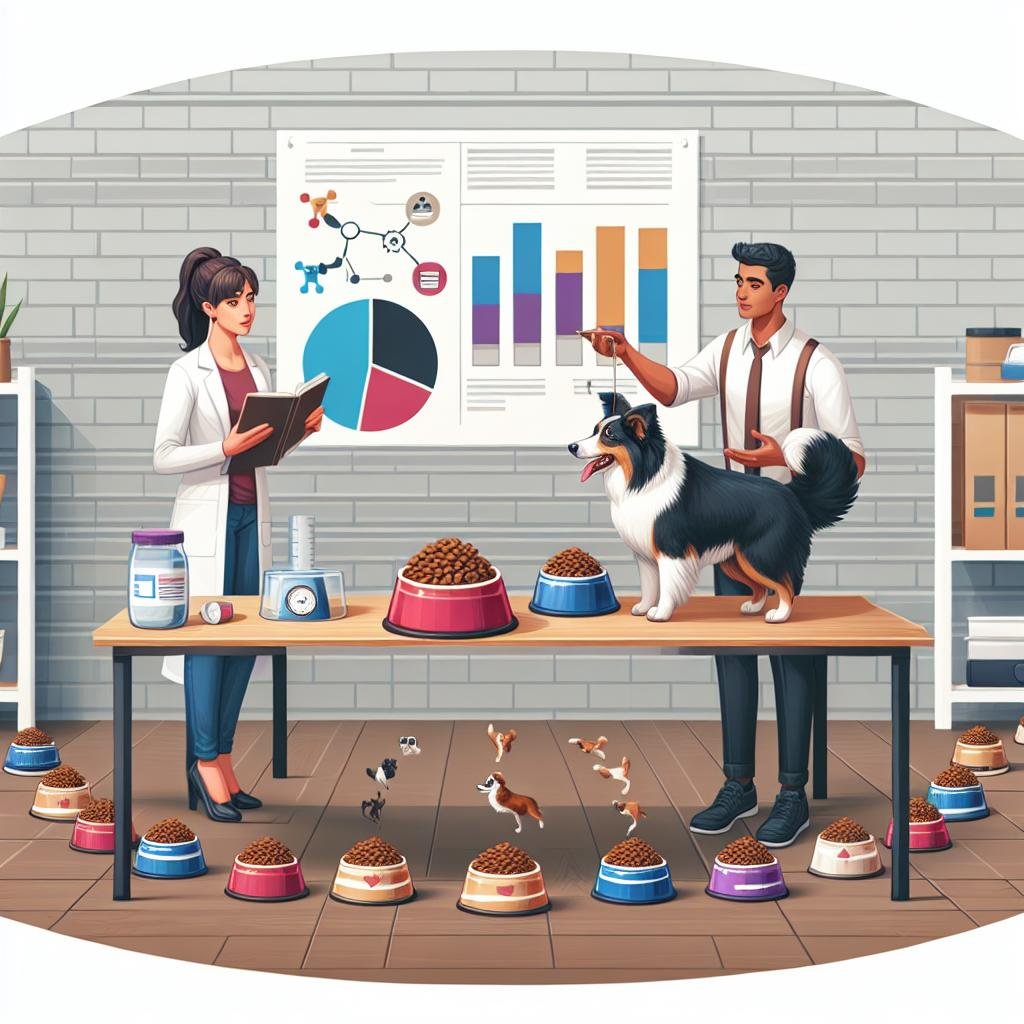When it comes to our furry companions, nutrition is a cornerstone of their health and happiness. Just like humans, dogs require a balanced diet to thrive, but within that balance lies a crucial element often overlooked: portion control. It’s easy to slip into the habit of overindulging our pets with treats or generous servings, driven by affection or the sight of pleading eyes. However, understanding the significance of portion control can transform your dog’s well-being, preventing obesity, promoting longevity, and enhancing their quality of life. In this article, we will explore the vital role that portion control plays in dog nutrition, equipping you with the knowledge to provide a healthier and happier meal experience for your canine friend. Join us as we uncover the benefits of mindful feeding and embark on a journey towards optimal dog health.
Understanding Your Dogs Nutritional Needs
Understanding your dog’s nutritional needs goes beyond just the type of food you provide; it also hinges significantly on how much you serve at each meal. Portion control is essential to prevent obesity, which can lead to serious health issues such as diabetes, heart disease, and joint problems. When determining the right portion sizes for your dog, consider factors such as their age, breed, weight, activity level, and any existing health conditions. Remember, each dog is unique, and their dietary requirements can vary dramatically. Here are some crucial elements to consider:
- Caloric Needs: Consult a veterinarian to determine your dog’s daily calorie requirements based on their specific lifestyle.
- Feeding Guidelines: Adhere closely to the feeding guidelines provided on dog food packaging, and adjust according to your dog’s response.
- Treat Management: Incorporate treats into their caloric intake judiciously, ensuring they do not exceed 10% of your dog’s daily calories.
To visualize proper portion control, a simple table can be helpful. Below is a guide to the recommended daily food portions based on the weight of your dog:
| Dog Weight (lbs) | Daily Food Portion (cups) |
|---|---|
| 10 – 20 | 1/2 – 1 cup |
| 21 – 50 | 1 - 2 cups |
| 51 – 75 | 2 – 3 cups |
| 76+ | 3+ cups (as recommended) |
By monitoring portion sizes diligently, you not only promote a healthy weight but also ensure that your canine companion receives the appropriate nutrients necessary for their overall vitality. Adjustments may be necessary throughout their life stages, so it’s vital to remain flexible and attentive to their needs.
The Impact of Portion Sizes on Canine Health
Understanding the relationship between portion sizes and canine health is crucial for pet owners. Over the years, research has consistently shown that excessively large portions can lead to a plethora of health issues in dogs. These include but are not limited to obesity, diabetes, and joint problems. When dogs are given more food than their bodies require, their metabolism slows down, and unused calories accumulate as fat. Moreover, specific breeds may be predisposed to certain health concerns, making it even more vital to monitor their portions carefully. A balanced diet tailored to the dog’s age, size, and activity level can help maintain optimal health and prevent serious complications down the line.
Conversely, underfeeding can also pose significant risks, leading to nutritional deficiencies and decreased energy levels. It’s essential to find that sweet spot, ensuring your dog receives adequate nutrients without the risk of excessive weight gain. A handful of tips to achieve proper portion control include:
- Consulting with a veterinarian for personalized feeding guidelines.
- Using measuring cups or a kitchen scale to ensure accuracy.
- Monitoring your dog’s body condition regularly to adjust portions as necessary.
By adhering to these practices, you can promote a healthier lifestyle for your furry friend, significantly improving their quality of life and longevity.

Strategies for Effective Portion Control
Implementing effective portion control can significantly enhance your dog’s overall health and well-being. One of the key strategies is to measure food accurately rather than relying on visual estimates. Use a standard measuring cup or a kitchen scale to determine the exact amount of food your dog should receive based on their weight, age, and activity level. Consider the following methods to maintain consistency in portion sizes:
- Pre-portion meals for the week to avoid overfeeding during busy days.
- Use slow feeders to encourage your dog to take their time eating, which helps prevent excessive consumption.
- Monitor treat intake by designating a specific treat portion that aligns with their daily caloric needs.
To personalize your dog’s diet, consult your veterinarian for tailored feeding guidelines. A helpful approach is to maintain a feeding schedule that incorporates these recommended portions into a daily meal plan. Here’s a quick reference table to guide you in establishing an optimal feeding routine:
| Dog Size | Daily Food Amount (cups) |
|---|---|
| Small (up to 20 lbs) | 1/2 – 1 cup |
| Medium (21 - 50 lbs) | 1 – 2 cups |
| Large (51 lbs and above) | 2 – 4 cups |
Remember to adjust the daily amount based on factors such as age, metabolism, and health conditions. Keeping track of your dog’s weight and adjusting portions accordingly will foster a happy, healthy life for your furry friend.

Making Mealtime Enjoyable and Balanced for Your Dog
Creating a joyful mealtime experience for your dog goes beyond simply serving food; it is about fostering a positive atmosphere that promotes health and happiness. A few tips to enhance your dog’s dining experience include:
- Routine Schedule: Establish consistent feeding times to help your dog anticipate mealtime.
- Unique Dining Spots: Choose various locations in your home for meals to keep things interesting.
- Interactive Feeding: Engage your dog’s natural instincts with puzzle feeders or treat-dispensing toys.
Portion control is crucial in achieving a balanced diet for your dog. To help you visualize appropriate servings, consider using a simple table that outlines feeding recommendations based on your dog’s weight:
| Weight of Dog (lbs) | Food Portion (cups/day) |
|---|---|
| 5-10 | 1/2 – 1 |
| 11-20 | 1 – 1 1/2 |
| 21-50 | 1 1/2 – 2 1/2 |
| 51-100 | 2 1/2 – 4 |
Q&A
Q&A: The Importance of Portion Control in Dog Nutrition
Q1: Why is portion control crucial in dog nutrition?
A1: Portion control is vital in dog nutrition as it helps maintain a healthy weight for your canine friend. Overfeeding can lead to obesity, which increases the risk of various health issues, including diabetes, joint problems, and heart disease. By measuring out appropriate serving sizes, pet owners can ensure that their dogs receive the right amount of nutrients without excess calories.
Q2: How can I determine the appropriate portion size for my dog?
A2: To determine the right portion size for your dog, factors such as age, weight, breed, and activity level must be considered. Most dog food packages provide feeding guidelines based on these criteria. However, it’s always advisable to consult with your veterinarian, who can provide tailored advice, especially if your dog has specific health needs.
Q3: What are some common mistakes pet owners make regarding portion control?
A3: One common mistake is relying on vague ”eyeball” estimates instead of using measuring cups or kitchen scales. Another is feeding “free choice”, where dogs have unlimited access to food, leading to overeating. Additionally, many pet owners forget to account for treats as part of their dog’s daily caloric intake, which can compound portion problems if not monitored.
Q4: Can portion control improve my dog’s behavior?
A4: Yes, portion control can positively impact your dog’s behavior. Overweight dogs often experience lethargy, which can lead to destructive behavior due to boredom. By maintaining a healthy weight through proper portion control, dogs are likely to have more energy, engage in play, and exhibit a happier demeanor.
Q5: Are there specific techniques to help with portion control?
A5: Absolutely! One effective technique is to use a feeding schedule, offering meals at set times instead of leaving food out all day. Additionally, using interactive feeders can slow down eating and encourage portion awareness. You can also engage in measuring food with a scale or a measuring cup to ensure accuracy.
Q6: What role do treats play in portion control?
A6: Treats can significantly impact portion control. They should be included in your dog’s overall daily caloric intake. Opt for healthy, low-calorie treats and limit their quantity to no more than 10% of your dog’s daily calories to prevent overeating and retain their appetite for regular meals.
Q7: How can I encourage my dog to accept smaller portions?
A7: Slowly reducing portion sizes while introducing engaging activities can help with this transition. Offer puzzle toys filled with a small amount of kibble to challenge your dog and prolong mealtime. Pairing meals with attention, playtime, or training can also help shift their focus from the amount of food to the quality of the experience.
Q8: What are the long-term benefits of maintaining portion control?
A8: Long-term benefits of maintaining portion control include a healthier weight, improved longevity, and a reduced risk of chronic diseases. Additionally, it can enhance your dog’s quality of life, keeping them active, agile, and playful well into their senior years. Consistent portion control helps in building a positive habit that contributes to overall well-being.
Remember, like any aspect of health, consistency in portion control is key. A healthy, well-fed dog is a happy dog!
In Summary
mastering portion control in dog nutrition is not just a matter of measuring kibble; it is an essential aspect of fostering a long, healthy, and joyful life for our furry friends. By understanding the specific needs of our dogs—considering factors like age, breed, and activity level—we empower ourselves to make informed decisions that promote their overall well-being. Just as we benefit from mindful eating, our dogs thrive when we take the time to evaluate their dietary habits.
As you embark on this journey of thoughtful feeding, remember that every scoop counts. From eyeing the serving size to observing changes in your dog’s behavior and body condition, your diligence will pave the way for a happier, healthier companion. Let your dog’s bowl reflect not just sustenance but a commitment to balance and care. After all, a well-fed dog is not only a satisfied one but also a cherished member of your family who can enjoy all of life’s adventures with you.

